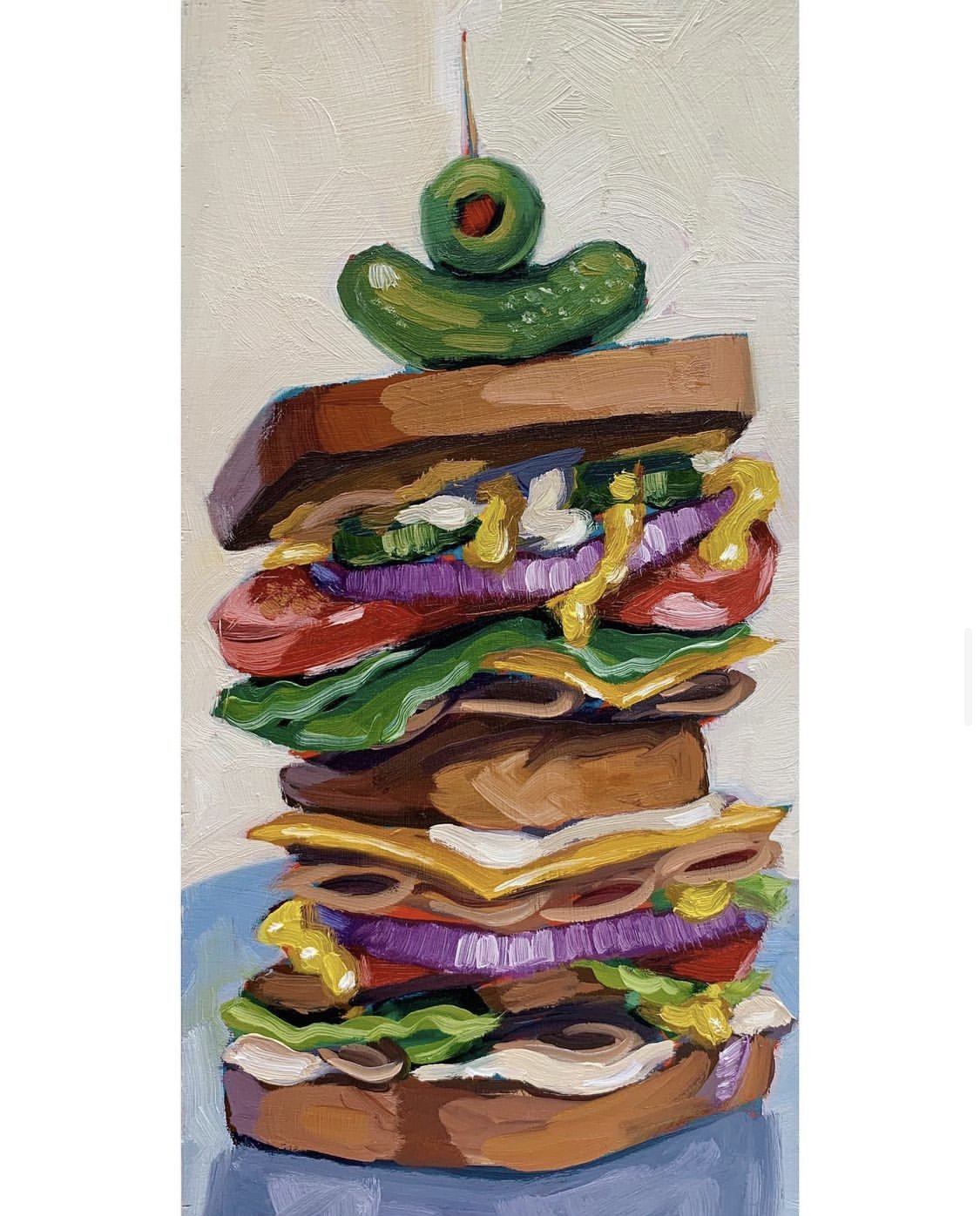Finding Your Style Sandwich
My “Deli Sandwich” painting from 2020.
If there’s one piece of advice I can give to new and emerging painters, it’s to not only learn to accept your mistakes, but to treasure them.
I don’t simply mean tolerate your painting mistakes; I want you to really lean in and embrace them. I remember when I started to get some podcast interviews early in my career, the question about how I found my style always caught me off guard. At the time I was trying my best to make realistic paintings, so any “style” that was showing through was simply me falling short of my intention.
My colors were exaggerated, I probably could have found a few more levels of value with my objects and my drawing has always been a little “off”. Believe me, if at the beginning of my career I could have easily corrected those perceived issues, I would have. But in hindsight I know if I had done that I wouldn’t be the painter I am today.
Here’s an idea of how I always construct this concept in my head: your style is like a sandwich. It’s made up of different parts and is anchored by your strengths and weaknesses.
The top bun contains the things you are naturally good at. I’ve always had a pretty good sense of color and design. Those elements have always shone through in my work no matter how much I struggled with the other technical aspects.
The middle of the sandwich consists of your influences, mediums and process— conscious elements that inform your style and give your work identifiable characteristics. Think of these elements as the protein and veggies of your art practice.
The bottom bun is arguably the most important structural part of the style sandwich. This encompasses all of the things you may consider as weaknesses. These are stylistic aspects that you may do differently than other artists or ways that you deviate from the “standard” method. The bottom bun is how your style veers away from the status quo.
I like to refer to supposed weaknesses as the bottom bun in this analogy because we tend to rank our skill set as a hierarchy. It’s very tempting to ignore elements of a practice that are difficult and seemingly inessential. But just like how no one is going to order a sandwich without a bottom bun, you shouldn’t view your least refined skills as elements to avoid in your work but instead as a style identifier.
My bottom bun, if you will, has always been my issues with drawing. I never claimed to be the most accurate renderer and this used to bother me a lot more. (Granted, I have improved over the years but I still don’t think of drawing as a strength of mine.) Keeping a steady practice for many years now has taught me to embrace my drawing as a part of what makes my work recognizable; this shift in mindset has been invaluable to my practice.
A sandwich needs all of its parts to be the most fully actualized version of itself. People don’t typically separate all of the elements of a sandwich and eat their favorite parts exclusively. We understand that, when constructed, a sandwich is better than the sum of its parts. In the same way, your style cannot be shed of its least refined elements without compromising the part of your work that makes it unique.
Nobody besides me knows that my drawing inadequacies are something that I struggle with. Instead, they take these shortcomings as part of my style that leans a little bit into a cartoon-like quality. As I’ve grown as a painter, I have learned to not only embrace these mistakes but to use them as a way to become more purposeful in my art practice.
You can take both your strengths and your weaknesses and examine them individually to decide if it’s something you would like to keep or change. Certainly, I have learned to work through some of my deemed weaknesses and found that even when I mastered these skills (like finding all the shades of values through multiple workshops I’ve taken) sometimes I preferred to leave them the way I naturally interpreted them.
Your style is a sandwich and if you’re a dedicated artist you’ll make many different sandwiches in the course of your career. You are in control and it’s important to remember that you will have shortcomings, but they will be an integral part of your process and art form.
The things that make you special as an artist are not only the things that shine but also the things that ground you. Sometimes that’s the bottom bun of a sandwich.

